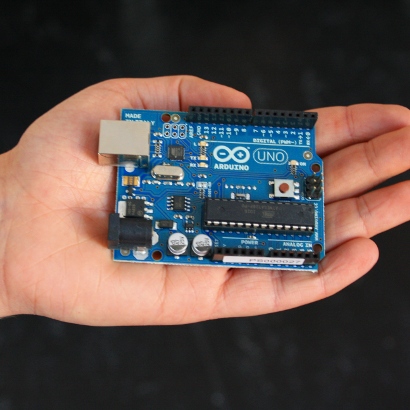Showing posts with label electronics. Show all posts
Showing posts with label electronics. Show all posts
Monday, April 30, 2012
Monday, April 16, 2012
Arduino simulation in Proteus
First thing first, the Ingredients:
(i) Proteus - ISIS
(ii) Arduino Software - v0017 (this is important, if you are want to run simulation in Proteus then do not download the latest version of Arduino Software)
So, let's begin step by step:
(i) Run ISIS and make a circuit like this:
Here are some specifications:
capacitor = 22pF
Vcc
Crystal Oscillator = 16MHz
Microcontroller = ATMega 328p
(ii) Double click on micro-processor and change the properties as follows:
(iii) Now run Arduino 0017 and go to
File --> Examples --> Digital --> Blink
This is just for demonstration, you may write your own code
'Save As' this file and remember the path of directory, you will need it later.
(iv) Push the 'UPLOAD' button, you will see a couple of errors, ignore them...
Go to the directory and search for the folder 'applet'
Here you will find a hex file...that is what you need
(v) Go back to your micro-controller and burn this file on it, process is simple
- Double click on Atmel
- In Properties, you will see a field 'Program File', insert the HEX file here by pressing the folder button right next to it
(vi) Press Enter and run the simulation....and there you go...a blinking light at PIN 19
(i) Proteus - ISIS
(ii) Arduino Software - v0017 (this is important, if you are want to run simulation in Proteus then do not download the latest version of Arduino Software)
So, let's begin step by step:
(i) Run ISIS and make a circuit like this:
capacitor = 22pF
Vcc
Crystal Oscillator = 16MHz
Microcontroller = ATMega 328p
(ii) Double click on micro-processor and change the properties as follows:
(iii) Now run Arduino 0017 and go to
File --> Examples --> Digital --> Blink
This is just for demonstration, you may write your own code
'Save As' this file and remember the path of directory, you will need it later.
(iv) Push the 'UPLOAD' button, you will see a couple of errors, ignore them...
Go to the directory and search for the folder 'applet'
Here you will find a hex file...that is what you need
(v) Go back to your micro-controller and burn this file on it, process is simple
- Double click on Atmel
- In Properties, you will see a field 'Program File', insert the HEX file here by pressing the folder button right next to it
(vi) Press Enter and run the simulation....and there you go...a blinking light at PIN 19
Arduino
To all my dear micro-controller lovers,
this board here is something that gives you liberty to touch the skies, we all know that engineering is like art where you can build whatever comes in your mind....and this board can be your first "canvas". This is Atmel based board which do not require any extra HEX. burner.
"Arduino is an open-source electronics prototyping
platform based on flexible, easy-to-use hardware and software. It's
intended for artists, designers, hobbyists, and anyone interested in
creating interactive objects or environments.
Arduino can sense the environment by receiving
input from a variety of sensors and can affect its surroundings by
controlling lights, motors, and other actuators. The microcontroller on
the board is programmed using the Arduino programming language (based on Wiring) and the Arduino development environment (based on Processing). Arduino projects can be stand-alone or they can communicate with software running on a computer (e.g. Flash, Processing, MaxMSP).
The boards can be built by hand or purchased preassembled; the software can be downloaded for free. The hardware reference designs (CAD files) are available under an open-source license, you are free to adapt them to your needs.
Arduino received an Honorary Mention in the Digital Communities section of the 2006 Ars Electronica Prix. The Arduino team is: Massimo Banzi, David Cuartielles, Tom Igoe, Gianluca Martino, and David Mellis. Credits"
Labels:
arduino,
Atmel,
electronics,
embedded,
micro controllers,
programming
Subscribe to:
Posts (Atom)





